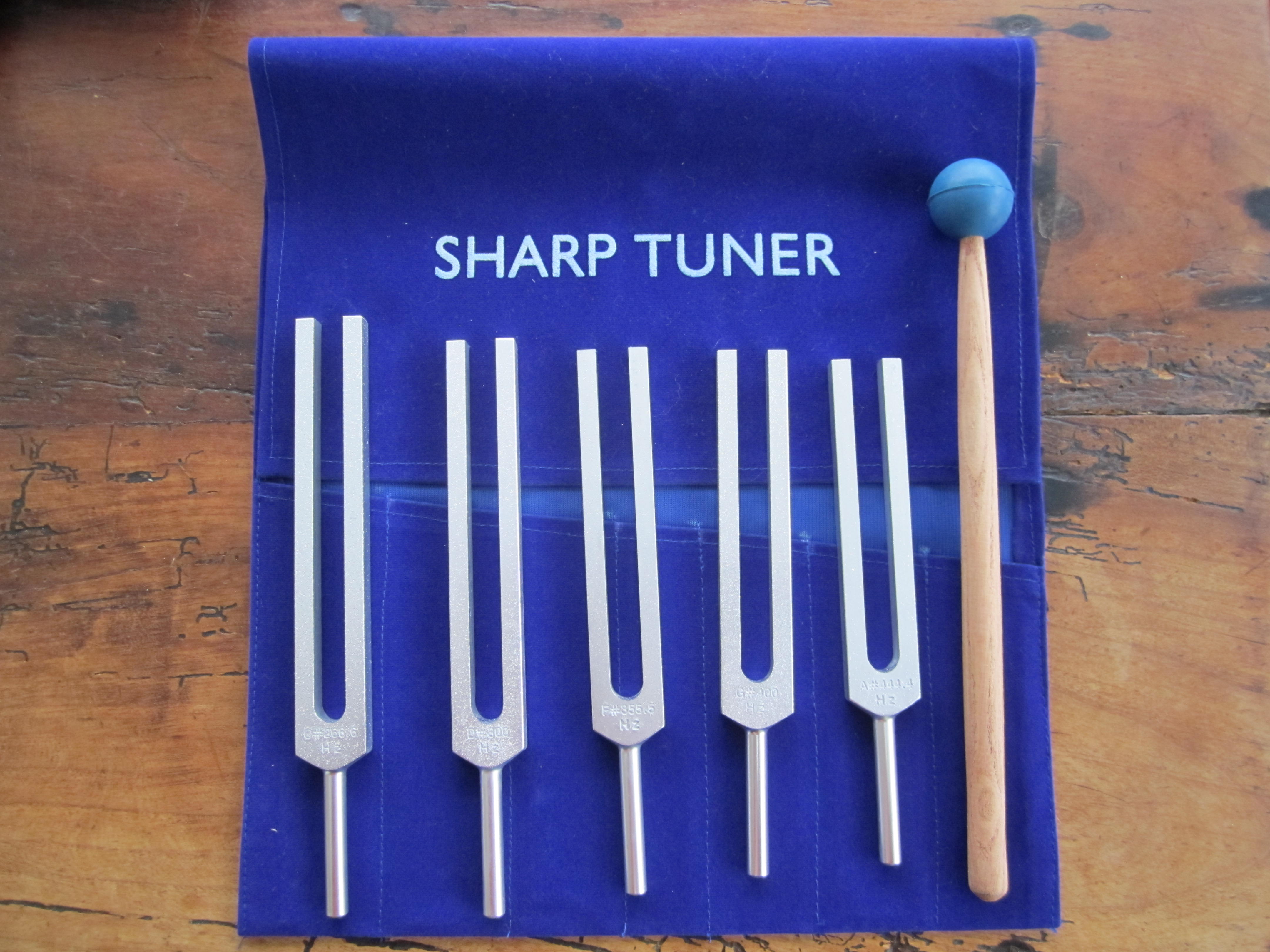

Sound pressure levels above the table when the stem of the tuning fork is attached to the table.įor comparison, we plot the sound pressure level for the same air domain when the tuning fork is held up. As can be seen below, the sound pressure levels are quite significant in a large portion of the air domain above and outside the table. The stem of the tuning fork is in contact with a point at the center of the table. It measures 1 by 1 m and is supported at the corners. We now add a 2-cm-thick wooden table surface to the model. Sound pressure level (dB) and radiation pattern (inset) around the tuning fork. Actually, if you turn a tuning fork around its axis beside your ear, the near-silence in the 45-degree directions is striking. This is approximately the maximum feasible value if the tuning fork is not to be overloaded from a stress point of view.Īs can be seen in the figure below, the intensity of the sound decreases rather fast with the distance from the tuning fork, and also has a large degree of directionality. The amplitude of the vibration at the prong tips is set to 1 mm.

By adding a boundary element representation of the acoustic field to the model, the sound pressure level in the surrounding air can be computed. The center of gravity is indicated by the blue sphere. Note that the scales differ between figures. Total displacement vectors in the first eigenmode.Īxial displacements only.

The peak axial displacement is 0.03 and the displacement in the stem is 0.01. The mode is normalized so that the maximum total displacement is 1. The displacements are shown in the figures below. The stem has an essentially rigid axial motion, which is necessary for keeping the center of mass in a fixed position, as required by Newton’s second law.The bending of the prongs is accompanied with an up-down motion that varies linearly over the prong cross section.If we study the displacements in detail, it turns out that even though the overall motion of the prongs is in the transverse direction (the x direction in the picture), there are also some small vertical components (in the z direction), consisting of two parts: The mode shape for the fundamental frequency of the tuning fork. The tone of the device is a reference A4 (440 Hz), the material is stainless steel, and the total length is about 12 cm.įirst, let’s have a look at the displacement as the tuning fork is vibrating in its first eigenmode: The model is based on a tuning fork that one of my colleagues keeps in her handbag. To investigate this interesting behavior, we created a solid mechanics computational model of a tuning fork. The tabletop surface will act as a large loudspeaker diaphragm. The motion is much smaller than the transverse motion of the prongs, but it has the potential to set the large flat tabletop in motion - a surface that is a far better emitter of sound than the thin prongs of a tuning fork. When you hold the stem of the tuning fork to a table, an axial motion in the stem connects to the tabletop. You can hear it, but it is not a very efficient conversion of the mechanical vibration into acoustic pressure. The pressure waves in the air propagate as sound. When you hold a vibrating tuning fork in your hand, the bending motion of the prongs sets the air around them in motion. As it turns out, the explanation behind this mystery can be boiled down to nonlinear solid mechanics. When you strike a tuning fork and hold it against a tabletop, it seems to double in frequency. In a recent video on YouTube from standupmaths, science enthusiasts Matt Parker and Hugh Hunt discuss and demonstrate the “mystery” of a tuning fork. In this blog post, we explain the tuning fork mystery using simulation and provide some fun facts about tuning forks along the way. When a tuning fork is struck, and held against a tabletop, the peak frequency of the emitted sound doubles - a mysterious behavior that has left many people baffled.


 0 kommentar(er)
0 kommentar(er)
